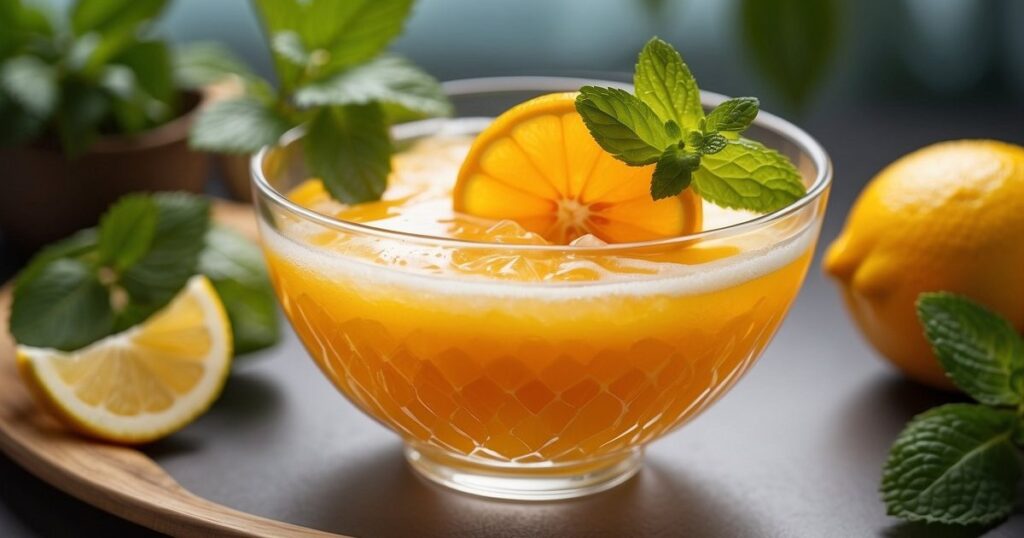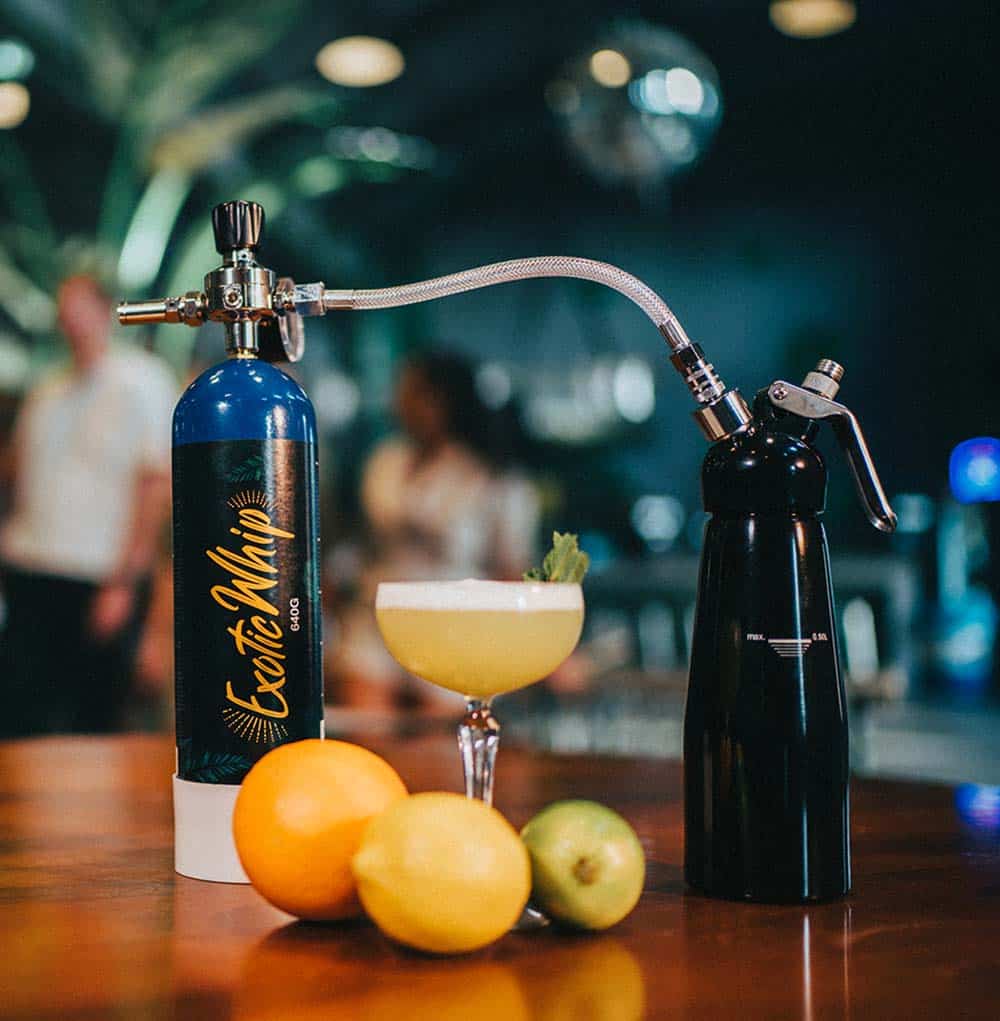Citrus Fruit Foam Recipe: A Simple Guide to Making Delightful Dessert Toppers
The Biggest Cream Charger Knowledge Base Online
Creating a citrus fruit foam recipe can elevate the sensory experience of your dishes with a burst of brightness and an airy texture that captivates the palate. These foams, which incorporate the zesty essence of citrus, can be made using innovative culinary tools like Exotic Whip products, ensuring a consistently light and fluffy consistency. The technique involves emulsifying the citrus liquid—be it from lemons, limes, oranges, or grapefruits—with stabilizing agents to trap air and form a stable foam.
When crafting your own citrus fruit foam recipe, you’ll blend the fresh, tangy flavors of citrus juice with ingredients that help create and maintain the foam’s structure. This process not only intensifies the taste but also adds a visually appealing element to your culinary creations. By following proper methodology, you’ll achieve a delicate foam that can enhance both the flavor and presentation of a variety of dishes, from desserts to savory plates.
Essentials of Citrus Foam Creation
Creating a delightful Citrus Fruit Foam Recipe is an artistic process that requires precision and a clear understanding of the fundamental components. This section will take you through the essential stages to help you craft the perfect citrus foam for your dishes and desserts.
Selecting the Right Citrus Base
To achieve the bright and refreshing taste essential for a citrus foam, select high-quality citrus fruits such as lemons, oranges, or grapefruit. Ensure that the fruit is ripe and bursting with juice. Use fresh lemon juice for a classic tangy foam, or branch out with orange or grapefruit juice for a sweeter or subtler twist.
Understanding the Foaming Agents
The structure of your foam depends heavily on the foaming agent used. Common agents include:
- Egg white: Creates a stable, airy foam.
- Gelatin: Offers a smooth texture when bloomed and dissolved.
- Agar: A vegetarian option that gels and aerates well.
- Xanthan gum: Provides viscosity and stability to liquid foams.
- Soy lecithin: Imparts an elastic quality to the foam, making it light and stable.
Choose a foaming agent that complements the citrus base and aligns with the desired consistency of your foam.
Tools and Techniques
You’ll need specific tools to turn your citrus-infused liquid into a light foam:
- Whipping siphon: Infuses the liquid with N2O to create bubbles.
- Immersion blender: Incorporates air into the mixture.
- Sous vide: Ensures precise temperature control if heating is required.
Technique matters; gently combine the foaming agents with your citrus base, ensuring full integration without overworking the mixture.
The Science of Molecular Gastronomy
The art of foam creation falls under molecular gastronomy. This field uses scientific principles to transform simple ingredients into innovative culinary presentations. By understanding how ingredients like sugar, water, and cream interact to create the structures and flavors you want, you’ll enhance the dishes you serve. Renowned chefs like Jason Logsdon have popularized modernist cuisine, making it accessible for both restaurant and home kitchens.
Execution and Presentation
Crafting a Citrus Fruit Foam Recipe involves precision and attention to detail. This section will guide you through the process of creating a delicate and flavorful foam that can enhance a variety of dishes and drinks.
Preparing the Citrus Foam
To start, you’ll need to combine citrus juice—usually lemon or orange—and a gelling agent like gelatin or agar. Heat the mixture in a pot just to the boiling point, stirring constantly. Once the gelatin has dissolved, refrigerate the mixture until it’s partially set. Transfer it to a whip canister, charge it with a N2O cartridge, then refrigerate for at least 2 hours.
Flavoring and Seasoning Adjustments
Balance is crucial for a perfect foam. Season the citrus base with salt, pepper, sugar, or honey to taste. For an exotic touch, consider adding a hint of ginger. Adjust the seasoning before gelling to ensure an even distribution throughout the foam.
Serving Suggestions and Pairings
Citrus foams brilliantly complement both sweet and savory dishes. Serve your citrus foam as a topping on desserts like ice creams or citrus marmalade. It also pairs well with a variety of vegetables or as an innovative addition to barrel-aged cocktails.
Tips for Perfecting the Texture
The secret to a perfect foam lies in achieving the right texture—it should be light with stable bubbles. Ensure your gelling agents are dispersed evenly before chilling, and always refrigerate the mixture before loading it into the whipper for a more consistent foam.
Safety and Storage
To preserve the integrity of the foam, store it in refrigerated conditions. If you’re not serving immediately, use airtight jars. Always handle the whip canister with caution, following the manufacturer’s safety guidelines.
Decorative and Alternative Uses
Beyond its role as a topping, citrus foam can also be used as an adornment for cocktails or as a unique garnish for snacks. Its airy texture can even serve as an alternative to whipped cream or meringue, making it a versatile tool in modernist cuisine. Consider giving citrus foam in nicely preserved jars as gifts to friends who appreciate culinary creativity.
Frequently Asked Questions
In this section, we will address common inquiries about crafting Citrus Fruit Foam Recipes that can elevate your culinary creations with a light, airy texture. Utilizing tools such as an Exotic Whip can assist in achieving the desired consistency.
How can I create citrus fruit foam for culinary use?
To produce a citrus foam for culinary uses, combine citrus juice such as lemon or lime with a stabilizing agent like gelatin or egg whites. Charge the mixture in a culinary whipper with an N20 cartridge and refrigerate for a couple of hours to set before serving.
What is the method for making lemon foam for desserts?
For a dessert-friendly lemon foam, whisk together an egg yolk with fresh lemon juice and optionally melted butter over low heat until foamy. This mixture, once cooled slightly, can be placed in a culinary whipper and charged to create a light foam that pairs well with sweet dishes.
Can you explain how to make a stable foam for cocktails using citrus?
To create a stable citrus foam for cocktails, mix citrus juice such as orange or grapefruit with a touch of sugar and a foaming agent like egg white or soy lecithin. Vigorously shake the mixture in a shaker or blend until stable foam forms, then spoon it onto your beverage.
What are some tips for achieving the perfect foam consistency for fish dishes?
For the perfect foam consistency to accompany fish dishes, use reduced-fat cream blended with citrus juice and your choice of herbs. The mixture should be well chilled and aerated in a whipper for a fine-textured foam that’s not too heavy.
How do you incorporate lecithin to create a reliable lemon foam?
To utilize lecithin for a reliable lemon foam, dissolve lecithin granules in warm water before blending it with fresh lemon juice. The mixture should be foamed with an immersion blender until it reaches the required volume and stability to serve.
What are some common practices to enhance the longevity of citrus fruit foams?
Ensure the longevity of citrus fruit foams by keeping the base mixture chilled, using proper ratios of stabilizing agents, and storing the charged whipper in the refrigerator. These practices help maintain the foam’s structure until it is ready to use.






